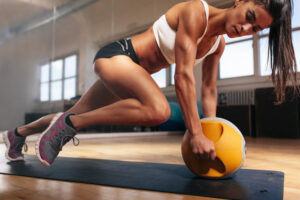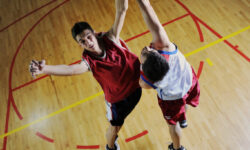
This week we are looking at fitness for tennis
It is the second week of Wimbledon and the country is going tennis mad. Whether you are a fan of Roger, Novak, Rafa, Serena or the new kid on the block, Coco, you cannot fail to be impressed by the huge fitness levels of today’s tennis stars.
Gruelling marathon matches
Tennis at its highest level is a sport that makes huge demands on the body. You only have to think of the gruelling matches between some of the top tennis stars to see that fitness for tennis involves just about every body system and every part of the body.
Key components of fitness for tennis
You need muscular endurance to continue to hit hard, accurate shots through out the match. There is the cardiovascular endurance needed to run for up to five hours. Fitness for tennis involves the explosive strength needed to sprint from one side of the court to the other. Flexibility to send a serve sizzling down the court; coordination to hit the ball well; reaction times to respond to a change in direction or speed. Fitness for tennis really ticks every box.
So how do you train to be top of your game? Here we put the tennis racquets to one side and concentrate on the elements that comprise physical fitness for tennis.
Core fitness and strength is key
The first thing you need to develop is a good core level of fitness. The ability to run 8-10 kilometres with relative ease will give you the endurance you need to participate at a competitive level. You should aim to do an eight to 10 kilometre run twice a week.
Next, you should aim to develop a strong core. Core strength refers to the 35 muscles that attach to the lower core – the limbo, pelvic, hip complex – and the upper core of spine, ribs and scapula area. These are the foundations of all movements and strength in this area is key to fitness for tennis.
Here are some key core strength exercises you can do.

Ball Wall Squats
Using a medicine ball, start with the ball pressed between your lower back and the wall.
Keep your knees behind your toes. Keep load though the heels and compress ball into the wall. Lower into deep squat position. Hover for 1-2 seconds and then move smoothly back to standing position, keeping the ball compressed against the wall throughout the movement.
Start with 1-2 reps x 10 sets. Increase to 2-3 reps x 20 sets.
You can increase leg strength and stability by gradually increasing number of repetitions and depth of squat. Progress to single leg squats when able.
Side-lying Physio Ball Abduction
Lie on your side with a medicine ball between your ankles
Raise both legs up into abduction and hold for 2-4 seconds. Do 2 sets of 6 reps.
Progress the demands on your body by increasing to 3 sets of 10-12 reps.
Squat Thrust
Lie over a medicine ball with arms in a press-up position with shins resting on top of the ball, hands shoulder-width apart under the shoulders.
Place knees slightly apart for stability. Set lumbar spine in neutral and ensure shoulders are stable with shoulder blades down and chest out.
Pull knees to your chest and crunch the abdominals to get an extra flex of the hips and back. Hold for 4 seconds. Slowly extend knees back, using your abdominals to prevent the hips dropping down. Do 2 sets of 6 reps, progressing to 3 sets of 10-12 reps.
Power is another key component of fitness for tennis.
Plyometric training is excellent for developing the type of quick power bursts that are essential for tennis performance. Here are three examples of plyometric training that develops fitness for tennis.
Jump to Box
Stand with feet shoulder width-apart in front of a sturdy box, 0.3-0.6m high. Now jump vertically as high as you can and land on the box. Your entire feet should be on the box at landing. Step off the box and repeat for the required number of repetitions.
3 sets of 10 reps, progressing to 4 x 15.
Split Squat Jump
This exercise improves hip flexibility and hip flexor power.
Assume a split squat position with one foot forward and the other projected to the rear. Hands can be placed on the hips. In this position the front knee will be bent at 90° and the rear knee will be almost touching the ground. Jump as high as possible before switching the position of the legs before landing.
Side-to-side Box Shuffle
To improve the ability to push-off the ground in a lateral direction.
Stand next to a sturdy box approximately 0.5m wide and 0.3m high. Place your right foot on the box while the left foot remains on the ground. Push up and across the top of the box; landing with the left foot in the middle of the top of the box and the right foot on the ground. Continue to shuffle back and forth across the box for the prescribed number of repetitions.
Use your arms to help lift up from the ground. Land softly and control the landing. Try to move back and forth in a smooth manner.
Thanks to the International Tennis Federation for the exercise inspiration. For advice and help with your fitness for tennis, or any other sport, please speak to one of the knowledgeable staff in the Outlooks Gym.







